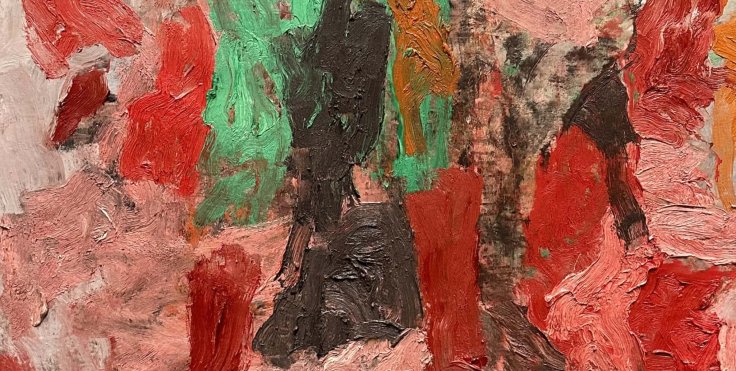
Philip Guston
Philip Guston (American, 1913–1980) was an important painter in the New York School of Abstract Expressionism, influential for his playful integration of abstract elements into figurative scenes. Born Philip Goldstein in Montreal, Canada, Guston’s family moved to Los Angeles when he was a child. As a teenager, Guston became fascinated with art, and attended the Los Angeles Manual Arts High School with Jackson pollock. Guston then enrolled at the Otis Art Institute for several months in the 1930s before becoming active with the mural movement, and Mexican artists such as Jose Clemente Orozco and Diego Rivera.
In 1935, he moved to New York, where he joined a growing number of artists that worked for the Works Progress Administration’s Federal Arts Projects. Combining Renaissance architectural platforms with a Cubist treatment of space, Guston developed his unique style in the 1940s, leading to a Guggenheim Fellowship in 1947. He continued to work and teach at New York University and the Pratt Institute throughout his later artistic career. His style radically changed in the late 1960s, however, as his work incorporated more symbols and he rendered landscapes and still life scenes in a flattened, cartoonish style. Throughout these later works, abstracted motifs, such as hooded heads and shoe soles, recur, reflecting the personal iconography Guston developed in his mature works.
credit artnet.com





